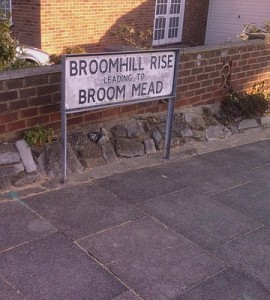The placenames Bexleyheath, Northumberland Heath, Lessness Heath and road names such as Little Heath Road, Heath Way and Broomfield Road attest to the heathland heritage of large parts of the Borough of Bexley. Heather-dominated heath survives (with management) in Lesnes Abbey Woods, and small patches of Gorse and Broom persist elsewhere. The Council’s Biodiversity Action Plan calls for re-creation of heathland at other sites, but nothing has been done about this. Unimproved acid grassland is still to be found on various golf courses, in cemeteries such as Erith on Brook Street, and Christchurch, Bexleyheath, also at Hollyhill Open Space. Many of these are designated as Sites of Importance for Nature Conservation.
This free lecture series will be of interest to those who appreciate, study and manage such sites in the Borough, and those who wish to see heathland re-creation actually happen in Bexley (The Bexley Wildlife team would be delighted to hear from any such persons ….).
There is space for 80 in the lecture theatre, so you are advised to come a little early if you want to be sure of securing a place.
This blasted heath – the future of lowland heathland, acid grassland and mire.
Friday evenings, 18:30, Oct 10th to Nov 14th 2014, Birkbeck University of London. Lecture theatre B36 (downstairs in the central Birkbeck building, entrance from Torrington Square)
In Act I of “Macbeth”, Shakespeare used a heath near Forres as the forbidding setting of a supernatural encounter. Heaths have long had a bad public image. Most heaths are ancient. They were established when woodland was cleared in places with an underlying geology forming an impoverished acidic soil, and maintained by traditional practices. However, they are diminishing throughout the country, even if pockets are still to be found in the southern counties and in the suburbs of London. These remnant heathlands are now much valued as natural open spaces. They are precious because they support a specialised biota, some of which is not found elsewhere. Loss may occur from ecological succession following the neglect of traditional management, or conversion to agriculture or to urban development. How can the remaining patches be saved? How can these important areas be managed to best effect? Management practices in different sites will be discussed and compared. Current problems will be highlighted and specialised conditions for particular groups of plants and animals discussed.
Further details of the six individual lectures, and a reading list, will be available later. To receive these, please email ecssoc@gmail.com, consult the website http://www.bbk.ac.uk/geds/our-research/ecss/free-public-lectures, or pick up a copy at one of the lectures.
Oct 10th. Heathland – a Cultural Landscape. Dr Nigel Webb, Chairman, Dorset Wildlife Trust, author of the New Naturalist volume on heathlands.
Oct 17th. Whatever happened to Hardy’s Egdon Heath? Our current efforts to save lowland heathlands. Dr Isabel Alonso, Natural England’s Senior Lowland Heathland Specialist.
Oct 24th. Access and Nature Conservation on lowland heaths. Dr Durwyn Liley, Footprint Ecology.
Oct 31st. Mires – the Cinderella habitat. Richard Lindsay, Head of Environmental Research Group, University of East London.
Nov 7th. Restoring our lowland heathlands and acid grasslands in a changing climate. Dr Malcolm Ausden, Principal Ecologist at RSPB.
Nov 14th. Herds on the Heaths; innovative techniques to reintroduce large herbivore herds. James Adler, Grazing Manager, Surrey Wildlife Trust.
The free public lectures are in a series hosted by GEDS, Birkbeck University of London. They are suitable for those who may be considering, or undertaking, university courses in ecology, biological conservation or related subjects. They will interest environmental and ecological practitioners, natural historians, wildlife organisations and others with similar interests.
The lectures are supported by Dept of Geography, Environment and Development Studies, Birkbeck University of London and would not be possible otherwise. They are organised and promoted by the Ecology and Conservation Studies Society, with assistance from the Linnean Society of London.

